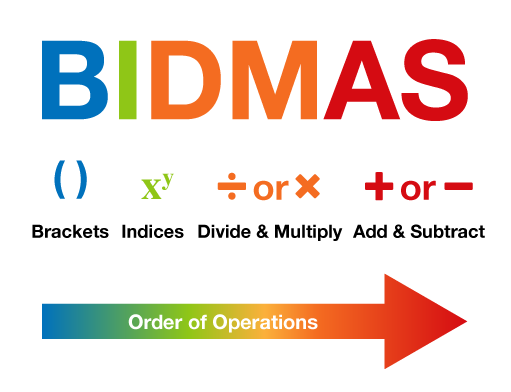11.1 Order of operations
The order in which you carry out operations can make a big difference to the final answer. When doing any calculation that involves doing more than one operation, you must follow the rules of BIDMAS in order to arrive at the correct answer.
B: Brackets
Any calculation that is in brackets must be done first.
Example:
2 × (3 + 5)
2 × 8 = 16
Note that this could also be written as 2 (3 + 5) because if a number is next to a bracket, it means you need to multiply.
If there is more than 1 operation in the brackets, you must follow the rules of BIDMAS in the brackets.
I: Indices
After any calculations in brackets have been done, you must deal with any calculations involving indices or powers i.e.
32 = 3 × 3
or
43 = 4 × 4 × 4
Example:
3 × 42
3 × (4 × 4)
3 × 16 = 48
D: Divide
Next come any division or multiplication calculations. Of these two calculations, you should do them in the order that they appear in the sum from left to right.
Example:
16 − 10 ÷ 5
16 − 2 = 14
M: Multiply
Example:
5 + 6 × 2
5 + 12 = 17
A: Add
Finally, any calculations involving addition or subtraction are done. Again, these should be done in the order that they appear from left to right.
S: Subtract
Example:
24 + 10 − 2
34 − 2 = 32
or
24 + 8 = 32
Activity 30: Using BIDMAS
Now have a go at carrying out the following calculations yourself. Make sure you apply BIDMAS!
- 4 + 3 × 2
- 5 (4 − 1)
- 36 ÷ 32
- 7 + 15 ÷ 3 − 4
Answer
- 4 + 6 = 10
- 5 × 3 = 15
- 36 ÷ 9 = 4
- 7 + 5 − 4 = 8
Now that you have learned the rules of BIDMAS you are ready to apply them when using formulas.

